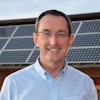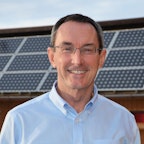Heat Pumps
Design & Installation
Air-to-Water
Hydronics
Hydronic Distribution Systems for Heat Pumps

About this course
This course explains the how hydronic heat emitters & distribution systems for heat pumps work. We'll dive into the weeds and look at example systems. It was designed for HVAC engineers, salespeople, and technicians.
This is course is part of our "Heat Pump System Design & Installation" series. You can take an individual course or enroll in the full program, which was created to provide a complete understanding of the design and installation of heat pumps systems.
This course is included in this bundle
Course outline
9 modules
3 hours to complete
2:48 hours
of video lectures
Welcome • 2 assignments
Orientation Materials
Welcome • 2 assignments
Orientation Materials
This course is self-paced, so you don’t need to be logged in at any specific time. You can get started immediately after you enroll and the course materials will remain in your account with minimum guaranteed access for 12 months (1 year) after enrollment.
Loading assignments…
Module 1 • 1 assignments
Why hydronics?
Module 1 • 1 assignments
Why hydronics?
This module described the fundamental "physics" that allows hydronic-based systems to offer several unique benefits relative to forced air systems.
Loading assignments…
Module 2 • 1 assignments
The importance of low temperature distribution systems
Module 2 • 1 assignments
The importance of low temperature distribution systems
This module explains why low temperature distribution systems are critical in optimizing the efficiency of contemporary heat sources. It also compares the thermal mass of different heat emitters, and explains the concept of thermal equilibrium.
Loading assignments…
Module 3 • 1 assignments
Low temperature / low thermal mass heat emitters
Module 3 • 1 assignments
Low temperature / low thermal mass heat emitters
This module described several types of hydronic heat emitters that can be used with systems supplied by heat pumps. It covers construction details and thermal performance factors.
Loading assignments…
Module 4 • 1 assignments
Radiant floor heating
Module 4 • 1 assignments
Radiant floor heating
This module describes several methods of installing radiant floor heating. Each installation method is shown along with related thermal performance characteristics.
Loading assignments…
Module 5 • 1 assignments
Air handlers and fancoils
Module 5 • 1 assignments
Air handlers and fancoils
This module covers the physical configuration and thermal performance of air handlers and fancoils that can be used with hydronic-based heat pumps.
Loading assignments…
Module 6 • 1 assignments
Simple / repeatable homerun distribution systems
Module 6 • 1 assignments
Simple / repeatable homerun distribution systems
This module shows one of the simplest and best performing hydronic distribution systems for use with hydronic heat pumps.
Loading assignments…
Module 7 • 1 assignments
Lowering water temperature in existing hydronic systems
Module 7 • 1 assignments
Lowering water temperature in existing hydronic systems
This module explains different approaches that can significantly lower the required design load water temperature in existing hydronic systems that allow improved performance with hydronic-based heat pumps.
Loading assignments…
Conclusion • 5 assignments
Feedback and Additional Resources
Conclusion • 5 assignments
Feedback and Additional Resources
This is our last module but you still have access to the all of course materials for 12 months (1 year), so keep working and you'll be able to complete the course at your own pace. After your year of access expires you can optionally extend access with a HeatSpring Membership. Enjoy the course and keep in touch!
Loading assignments…
Continuing Education Units
Instructor

John Siegenthaler
P.E., Appropriate Designs
John Siegenthaler, P.E., is a mechanical engineering graduate of Rensselaer Polytechnic Institute, a licensed professional engineer, and Professor Emeritus of Engineering Technology at Mohawk Valley Community College. “Siggy” has over 40 years of experience in designing modern hydronic systems. He is a hall-of-fame member of the Radiant Panel Association, and a...
Frequently asked questions
Full FAQHow does this course work?
You can begin this online course instantly upon enrollment. This course is self-paced and you can set your own schedule to complete the materials. You can begin the lecture videos and other course materials as soon as you enroll. During your year of access the instructor will be in the course answering questions on the discussion board. After successfully completing the course, you will be able to generate a certificate of completion.
How long do I have access to the materials?
Students get unlimited access to the course materials as soon as they enroll and for one year (365 days) after enrollment. Rewatch videos and review assignments as many times as you want. View updates the instructor makes to the course as the industry advances. Return to your course anytime with online access from anywhere in the world. After the one year of access expires, access can be extended by joining as a HeatSpring member. A single membership extends access to course materials for all past enrollments.
Is there a certificate of completion?
Yes, when you complete this course you are eligible for a certificate of completion from HeatSpring. You can download your certificate as soon as you have completed all of the course requirements. Students can easily share their verified certificates on their LinkedIn profiles using our LinkedIn integration.
Can I register multiple people?
Yes, please visit our For Teams page to get a group discount.